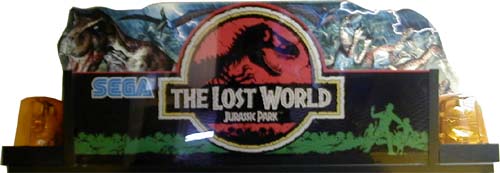

In fact, "Into the Trees" starts out as a jolly march that is quite reminiscent of Williams' Indiana Jones soundtrack - one of several such occasions on the soundtrack, although the similarities are rather fleeting and never a sign of lacking inspiration. Most of the game score album is devoted to such music, despite what the album's opening track might lead you to believe. What Giacchino's The Lost World: Jurassic Park does have in common with its cinematic counterpart is its propensity for dark and violent action material that sets both scores apart from the sense of wonder that Williams' original Jurassic Park score exuded. At the same time, Giacchino's score hardly establishes a thematic identity of its own, with none of game's different characters receiving a particular sonic footprint. Bodyĭespite what one might believe in the case of a young composer who admires John Williams' scores and works on a game produced by Steven Spielberg, Giacchino doesn't make any thematic references to either the first nor the second of Williams' Jurassic Park soundtracks. Setting The Lost World: Jurassic Park's soundtrack further apart from other scores of this era, it received a commercial, stand-alone soundtrack release on CD in the USA and Europe. The Lost World: Jurassic Park displayed Giacchino's knack for creating orchestral game scores and his next Dreamworks project would be the groundbreaking Medal of Honor. Little did anybody know at the time that this decision would alter the course of video game music history. According to Giacchino, the decision to record the soundtrack with an orchestra - and not with sampled music as planned - was more or less made on the spot when Spielberg surprised the game's producers and Giacchino in a meeting by asking when the score would be recorded, casually assuming that this had always been the plan. Giacchino's later recollection of his first meeting with the legendary director is both insightful and amusing. Giacchino had recently started working as a producer for Steven Spielberg's Dreamworks Interactive and The Lost World: Jurassic Park's turned out to be his first composing job for the company. What's more, the score in question was created by none other than a young Michael Giacchino, at the time coming off his deliciously eclectic composing debut Maui Mallard in Cold Shadow. If there is anything memorable about The Lost World: Jurassic Park, it's the fact that it was one of the first games to include a fully orchestrated soundtrack.


While the game tried to shake things up by having the gamer play as one of five different characters - including both humans and dinosaurs - the 2.5D platform jumper suffered from a number of gameplay problems that made it another entry into the very long list of mediocre video games based on a film license. The explosion effects seen in the game are taken from the 1996 first-person shooter, Duke Nukem 3D.One would be hard pressed to find anybody who fondly remembers The Lost World: Jurassic Park, released in 1997 on Saturn and Playstation to coincide (of course) with the theatrical release of Steven Spielberg's blockbuster sequel to his first Jurassic Park movie.The players can also use a GPS system used for mission objectives and a map. Players can use a body armor that gives them more chance of survival by increasing their health, and use vehicles, such as the Mercedes-Benz M-Class seen in the film. However players can collect more weapons, such as machine guns to grenades. Players start with a taser, a tranquilizer gun, and a shotgun as their starting weapons. The players has freedom to choose which level they want to play first. The island is divided into 4 hub areas, each of them contains levels. The game is played from an isometric view. The player, as a hunter (Player 1) and Ian Malcolm (Player 2) is sent to Isla Sorna by InGen to capture some dinosaur specimens and battle another group of hunters (it is unknown whether they are sent by Peter Ludlow, Biosyn, or simply poachers).


 0 kommentar(er)
0 kommentar(er)
